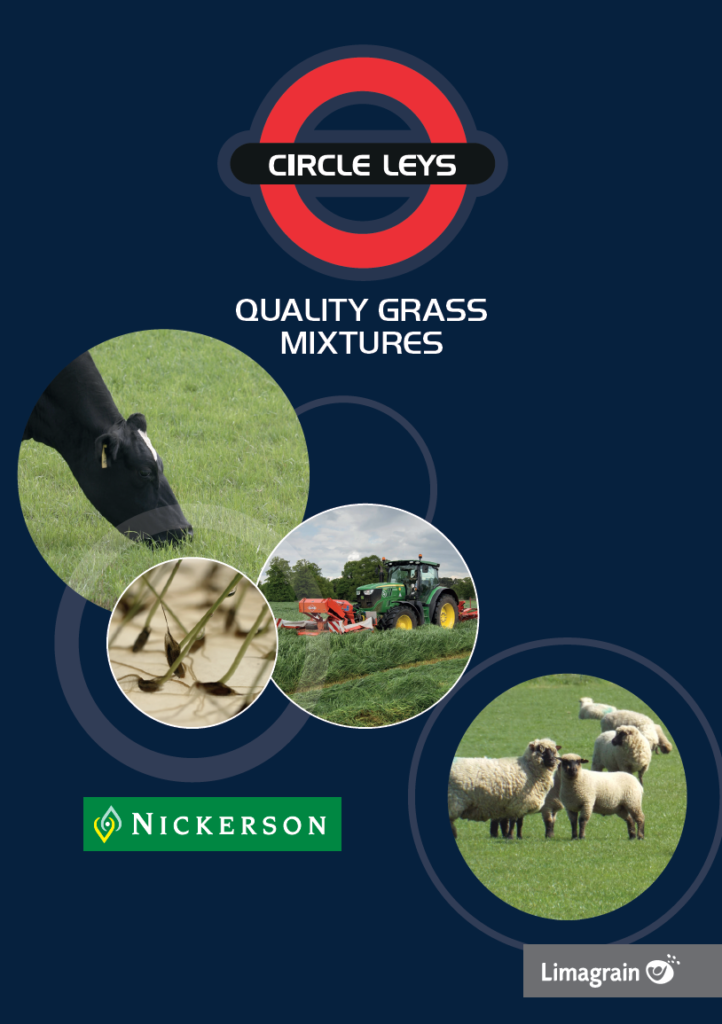After 45 years working for Nickerson I have decided to move on to the next stage of my life, which is retirement.
I thought it was ironic that on my last day on farm I’ve taken a picture of one of the best crops of winter wheat I have seen in my area which happened to be Claire, a winter wheat which must be over 25 years old. It has been a pleasure helping Nickerson to introduce new varieties to the market and hear the success stories of those that we have introduced, too many varieties to mention.


A massive thank you to all my customers, if it was not for your support and loyalty I would definitely not have lasted the 45 years working for the company and I wish you all every success in your future cropping. I know I am very comfortable leaving the business in a very safe pair of hands – those of Douglas Bonn. We have enjoyed meeting most of you over the last three months and he will continue to look after your requirements in the future.
Again thank you for your support I wish you well
Nick Wallace.
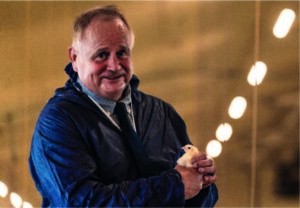
I am excited to have started my career at Nickerson, and look forward to getting stuck into my new role as Seed Specialist in glorious Yorkshire.
I will be covering the Yorkshire region from the Humber to the moors of North Yorkshire, heading west across the Pennines and on to the Lancashire border. In my previous role I was involved in the seed potato industry, so with Nickerson I will be swapping seed potatoes for just about every other type of seed!
I grew up in the Scottish Borders surrounded by farms but with no direct links to agriculture until I opted to study it at SRUC in Edinburgh. I embarked on a career in the potato industry, having carried out a placement year with McDonald’s focussing on where their fries come from. I then switched from ware potatoes to seed potatoes. The seed industry has always been of interest to me for two key reasons; Firstly, regardless of the crop type everything in farming starts with a seed; Secondly, my grandfather had a seed business based in the Borders many years ago dealing mainly with grass. Although no longer in existence, I like to think I am carrying on the family tradition!
My area includes a mix of low ground arable farms to upland sheep farms, and I am looking forward to getting to know customers both old and new, and offering seed based solutions to meet the unique challenges thrown up by each farming system.
If I can be of any assistance to farmers in the Yorkshire region, please do not hesitate to contact me on 07734 737008 or grant.connor@nickerson.co.uk
SFI: Having your Herbal Cake and eating it…The new SFI schemes are prompting many conversations with our growers, especially around herbal leys and particularly SAM 3. Essentially, the new name for GS4 within the older Countryside Stewardship Scheme.
There are many mixtures available in the marketplace for growers to choose from that will be compliant with the scheme’s protocol. But it is not until you really pay attention to these mixtures and investigate what makes up their contents, that you see how different they all are.
A grower could end up with a herbal ley that grows just enough to require a topper over it once a year, or a herbal ley that will perform closer to the outputs of a conventional ley.
A frequent question from growers that are looking to sow a SAM3/GS4 herbal ley in place of a conventional grass ley is; can I maintain production whilst qualifying for the SFI scheme’s intentions, and be able to claim a payment?
In short, herbal leys simply will not match a top performing ley for yield or quality, but we know that we can get close with our mixtures.
Conventional grass mixtures have been designed and tested over many years using varieties that have been bred and cultivated over decades, such as our Circle leys, that have been true to their concept since 1947.
The best performing leys use varieties that complement and will grow together, in harmony. Scheme compliant mixtures simply do not have the ability to compete, whichever way you cut it – wildflowers and herbs will not yield, harmonise, or have the feed value in comparison with modern clovers and ryegrass.
You also have to factor in the animal’s desire to eat what is in front of it and whilst herbs sound ideal, too much is overpowering, and an animal will spend more energy looking for the alternative.
From our experience with CSS and lessons we have learnt, Nickerson and Limagrain have looked to get as close as we can with the mixtures.
First off, we use only seed of the highest quality and vigour and then design a herbal ley with the same approach as a conventional ley. Indeed, as for our SAM 3/GS4 mixtures we start with using one of our conventional leys as a base and remove/add in constituents to make it compliant.
We can also tailor a mixture to include more higher yielding and quality grasses and clovers and less productive legume types, herbs and wildflowers that will offer least in terms of production. We therefore offer different mixtures with different percentages of ryegrass and clover; all of which are compliant with the scheme but will suit growers’ requirements accordingly.
This year, I have been working with a grower, where we have been growing our multispecies 75 as seen in the pictures below.

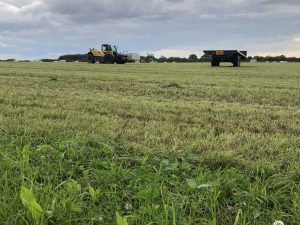
These photos were taken on the 3rd of August, and this was its 4th cut of the year already and two grazes. Yields were to a point of causing an issue of what to do with the excess! Quality is also very high.
So, can you have your herbal cake and eat it? Well, talk to your local Nickerson Seed Specialist to find out…
A word on stubble turnips from our Southern Sales Manager Jon Payne
A real joy in this job is to see my recommendations and our crop genetics working to provide solutions and performing for our growers. Such as this crop of Rondo and Sampson Stubble turnips also sown with Interval Rape/Kale Hybrid. It has been grown as a break crop between an old permanent pasture ahead of a planned Pro Plus grass ley which will be drilled this Autumn. Growing this break crop will lower the pest burden of leather jackets, frit fly and Wireworm for the pro plus reseed whilst also providing a huge feed source for the beef and sheep unit with grazing in situ. It also is giving more feed options and diversity for the grower within their rotation.
Pictured, Charlie, Jonathan’s son looking very pleased with his crop of Rondo & Samson stubble turnips!
Meet our new seed specialist for the North West, George Hall
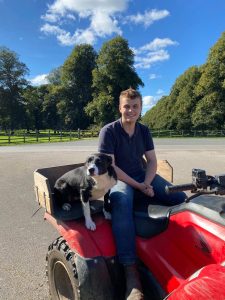 I am delighted to have started my new role as a Seed Specialist at Nickerson.
I am delighted to have started my new role as a Seed Specialist at Nickerson.
I will be covering the North West, North Wales and North Shropshire areas. Since graduating with a BSc Agricultural degree, I had been working on the family farm, which is a 300-acre arable and livestock enterprise where we run 100 Hereford cows and 300 sheep.
We crop approximately 100 acres of the farm annually, this year we will be growing LG Typhoon winter wheat and LG Caravelle winter barley, which will be used on the farm for livestock feed, with excess sold into the feed market.
The livestock enterprise is run with an emphasis placed on maximising daily live weight gain from forage. We improve grazing leys through over seeding on rotation, in addition to including high yielding grass mixtures, as part of the arable rotation for ensiling.
I am excited to meet my customer base throughout the area and assist you with fulfilling your farms’ potential.
If there is anything I can help you with, please do not hesitate to contact me on 07860 590 412 or george.hall@nickerson.co.uk
Before you drill grassThe two main factors to consider are your soil status and condition.
Ensure the area is tested for appropriate nutrient levels – pH, in particular, is vitally important.
Full Reseed
Full Reseed: soil needs to be consolidated, which starts early. Every pass should aim to further consolidate the seedbed. Do not wait and roll it twice afterwards – the area will be far more level and uniform if you start consolidation early. Ideally, roll prior to sowing as this also gives a more uniform sowing depth.
Longer term leys will achieve a greater ground cover if the seed is broadcast uniformly, as it attains a high percentage of yield from tiller density.
Short term leys tiller density and growth habit are different, so sowing in rowsq using a conventional drill can be an option.
A two-year break from long term grass is ideal to reduce the risk of pests. Failing this, reducing pest population and dense organic matter can often be achieved by using a grazing catch crop, such as stubble turnips.
Overseeding
Overseeding is simply a short-term fix and will not have a long-term benefit.
It will allow a yield increase in many situations but a field by field assessment is essential. Firstly, consider any pests and how to control them. Secondly, assess the level of undesirable plant species that are present.
More Information
To learn more about Circle Leys, download the Brochure here.
To view the Circle Leys range, click here
Or contact your local Seed Specialist.
Forages to use with grassWhile grass leys provide the backbone of all ruminant diets there are a plethora of other forages.
All these forages maximise their potential when matched with a quality Nickerson Circle Ley.
Maize
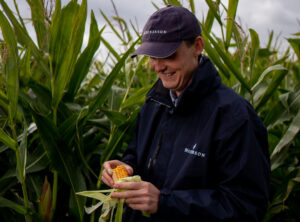 LG maize is a perfect complement to all Circle Leys, with excellent agronomic and feeding characteristics.
LG maize is a perfect complement to all Circle Leys, with excellent agronomic and feeding characteristics.
Fodder beet
LG fodder beet provides an excellent energy source combined with superb dietary fibre.
Lucerne
Lucerne offers a superb forage with the most rumen friendly protein source
Cereals
LG cereals offer many opportunities as a complementary feed in terms of wholecrop and grain using numerous different methods 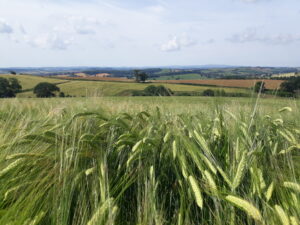
More Information
Contact your local Seed Specialist.
What are GPA and SFC?To improve establishment, most Circle Leys are treated with a GPA and Seed Film Coating as standard.
Growth Promoting Agent
GPA (Growth Promoting Agent) is a researched blend of nutrients essential for plant growth. These stimulate seedling germination, particularly under stress conditions and also encourage larger root systems, enabling the plants to absorb soil nutrients more efficiently.
Seed Film Coating
Seed Film Coating is a technique that forms a polymer film around the seed in which a range of conventional and innovative seed treatments can be carried. Seed Film Coating offers a number of major benefits to the seed and its application.
• Accurate application of GPA seed treatment
• Increased efficacy of the GPA
• Less dust in the seed
• Improved establishment
More Information
To learn more about Circle Leys, download the Brochure here.
To view the Circle Leys range, click here
Or contact your local Seed Specialist.
What sets Nickerson seed quality apart?The UK’s finest range of grass mixtures
Mixture trialling
Nickerson believe in the importance of mixture trialling. Recommended Lists from DARD, NIAB and SAC are used as a starting point, but these take little account of how individual varieties perform when grown together in a farmer’s grass ley. This is where Nickerson research begins. 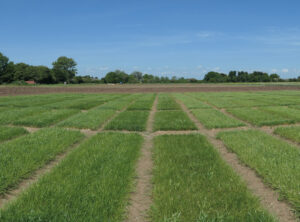
Mixture trialling is the key to ensuring that only the very best grass mixtures find their way onto your farm.
Highest seed standards possible
Good establishment is essential to achieve full production potential. Poor establishment results in weed invasion, increased poaching and loss of yield. Seed of the highest quality is therefore critical to achieve good establishment.
Germination standards

Purity standards

More Information
To learn more about Circle Leys, download the Brochure here.
To view the Circle Leys range, click here
Or contact your local Seed Specialist.
Why Circle Leys is trusted by generations; past, present and futureOver the last 70 years farming has evolved significantly.
However, during that time the one aspect that hasn’t changed is the need for high quality forage as grazed grass or conserved forage to feed ruminant animals.
Almost 70 years ago Fred Craven created a group of leys for Sir Joseph Nickerson designed with a specific purpose in mind. In the subsequent years we have added to this mixture range as farming has changed and we have adapted the mixtures accordingly.
Core benefits such as yield, disease resistance and other agronomic characteristics are vital to production and are attained through use of unique and varied varieties from a range of plant breeders worldwide.
Unashamedly we have remained totally faithful to the original thought process based around high quality forage. Dry Matter Intake and overall D-value/ME are the main drivers throughout the range, allowing the ruminant to maximise intake and therefore maintenance and production from forage.
More Information
To learn more about Circle Leys, download the Brochure here.
To view the Circle Leys range, click here






